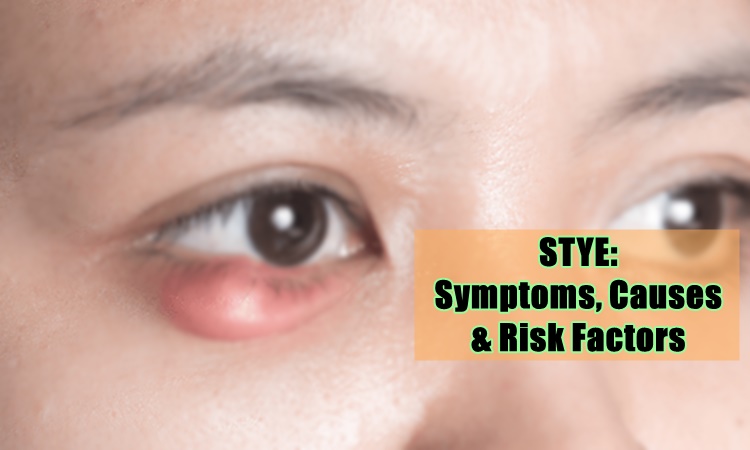Here are the symptoms, causes, and risk factors of the infection called stye
A stye is an infection identified as the inflammation of the eyelid associated with a small collection of pus and here are the things you need to know about this.
This condition also known as hordeolum. It can be uncomfortable as well as unsightly but commonly it is not as dangerous as other infections are. Most cases, styes appear outside of the eyelid and it may turn yellow and release pus but the lump can also develop inside and it is more painful. The majority of those who experience this just waited for 1 week, then the lump will disappear.

CAUSES
Most of the time, the infection is caused by Staphylococcus bacteria. Sometimes, it develops due to the complication of blepharitis, an inflammation of the eyelids, which is a bacterial infection but can sometimes be a complication of rosacea. This is an inflammatory skin condition that affects the skin of the face.
SYMPTOMS
- a lump on the eyelid
- swelling of the eyelid
- pain
- redness
- tenderness
- crusting of the margins of the eyelids
- burning sensation
- droopiness of the eyelid
- itching of the eye
- blurry vision
- discharge of mucus from the eye
- light sensitivity
- tearing
- discomfort when blinking
- the feeling that there is an object in the eye
READ ALSO: Improve Vision, Gain Healthier Eyes With This Recommended Diet
RISK FACTORS
- using cosmetics after their use-by dates
- not removing eye makeup before going to bed
- not disinfecting contact lenses before putting them in
- changing contact lenses without washing hands thoroughly
- adolescents tend to have styes more commonly, but people of any age can develop them
- poor nutrition
- sleep deprivation
According to the article from Medical News Today, if the stye persists for more than 1 week, the patient should immediately consult a doctor. With this period of time, the vision problem may occur and the swelling becomes even more painful.
READ ALSO: TEETH WHITENING: What You Need To Know, According To Dentists
